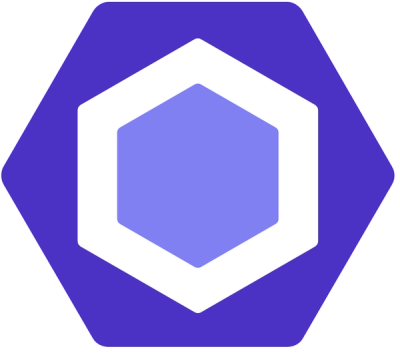
Security News
Follow-up and Clarification on Recent Malicious Ruby Gems Campaign
A clarification on our recent research investigating 60 malicious Ruby gems.
google-oauth2-installed
Advanced tools
Configure and authenticate to Google with OAuth2 as an installed application.
This is for when your application needs to authenticate to Google services, as opposed to your application's users.
Extracted from applications that use the DFP and Analytics APIs,
google-oauth2-installed helps with configuration (from ENV).
It also helps with setup by providing an easy command to generate your OAuth tokens.
For more information about Installed Apps: https://developers.google.com/accounts/docs/OAuth2InstalledApp
Google provides three ways to authenticate with OAuth2:
access_token, which requires user interaction through
a browser. google-oauth2-installed tries to make this process as simple as
possible. The bad news is that access_tokens expire. The good news is that
the access_token comes with a refresh_token that does not expire. So,
once you've aquired your tokens, you can store them for later use and forget
about it.Add this line to your application's Gemfile:
gem 'google-oauth2-installed'
Or install it yourself as:
$ gem install google-oauth2-installed
First, you need to create an application identifier in Google Cloud Console. Please follow these instructions lovingly copied (and only slightly altered) from the google-api-ads-ruby library.
Visit Google Cloud Console and:
- Click CREATE PROJECT to create a new project.
- Enter the Project Name (and optionally, choose your own Project ID), and click Create.
- The newly created project should automatically open. Click APIs & auth to expand the menu, and then click Credentials.
- Click CREATE NEW CLIENT ID to create a new client identifier and client secret.
- Choose Installed application, and *Other for the "Installed application type".
- Click CREATE CLIENT ID to complete the registration. Client ID and client secret will be created and displayed.
The Client ID and secret values are the parameters you will need in the next step.
Then go to Concent screen and make sure *Email addresses and Product name are filled in
or you will get a no application name error.
Define the following environment variables. I recommend using the
dotenv gem (dotenv-rails in rails projects)
and adding these variables to a .env file.
OAUTH2_CLIENT_ID="..."
OAUTH2_CLIENT_SECRET="..."
OAUTH2_SCOPE="..."
OAUTH2_SCOPE is a space delimited list of the scopes your application will
need access to. For example, for readonly access to analytics, and write access to
DFP, use:
OAUTH2_SCOPE="https://www.googleapis.com/auth/analytics.readonly https://www.google.com/apis/ads/publisher"
Once you have these environment variables defined, run this rake task and authenticate to google with the user you need access as.
rake googleoauth2installed:get_access_token
This rake task will give you a url to load up in the browser. You will need to log in to Google, allow access to the requested scopes, and copy the provided code. Paste this code back in to the rake task that is waiting for you. It will then output the rest of the environment variables you need to authenticate.
(If the URL shows an error, you may need to supply a Product Name under the Consent Screen section of your Google Developers Console.)
If you are using .env, it should now look something like:
OAUTH2_CLIENT_ID="..."
OAUTH2_CLIENT_SECRET="..."
OAUTH2_SCOPE="..."
OAUTH2_ACCESS_TOKEN="..."
OAUTH2_REFRESH_TOKEN="..."
OAUTH2_EXPIRES_AT="..."
You might need to reference our rake task from your Rakefile. Try something like this:
require 'rubygems'
require 'bundler/setup'
load 'tasks/get_access_token.rake'
Once you have all of your environment variables set up, just ask GoogleOauth2Installed
for an access token. GoogleOauth2Installed will handle refreshing it if needed.
Example usage with Legato for Analytics:
Legato::User.new GoogleOauth2Installed.access_token
If you just need the details (and not a refreshed access token), use
GoogleOauth2Installed.credentials.
Example usage with DfpApi:
dfp_authentication = GoogleOauth2Installed.credentials.merge(
application_name: ENV['DFP_APPLICATION_NAME'],
network_code: ENV['DFP_NETWORK_CODE'],
)
::DfpApi::Api.new({
authentication: dfp_authentication,
service: { environment: 'PRODUCTION' },
})
git checkout -b my-new-feature)git commit -am 'Add some feature')git push origin my-new-feature)FAQs
Unknown package
We found that google-oauth2-installed demonstrated a not healthy version release cadence and project activity because the last version was released a year ago. It has 2 open source maintainers collaborating on the project.
Did you know?

Socket for GitHub automatically highlights issues in each pull request and monitors the health of all your open source dependencies. Discover the contents of your packages and block harmful activity before you install or update your dependencies.

Security News
A clarification on our recent research investigating 60 malicious Ruby gems.

Security News
ESLint now supports parallel linting with a new --concurrency flag, delivering major speed gains and closing a 10-year-old feature request.

Research
/Security News
A malicious Go module posing as an SSH brute forcer exfiltrates stolen credentials to a Telegram bot controlled by a Russian-speaking threat actor.